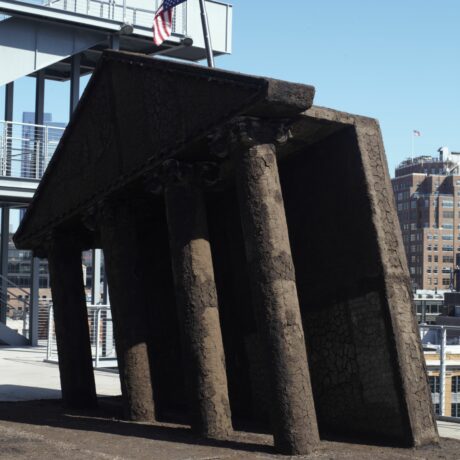
La Plaza’s facade was unremarkable and smudged with the dirt that the heavy Los Angeles traffic inevitably kicked up, but inside, glamour dripped off the stage and swayed from the back room, where the long-running club’s performers (many of whom were trans) costumed up. One night in 1994, Gaby glanced into the dressing room mirror and tousled her big curls. As fingers teased and primped, the buoyant, polka-dot tulle cuffs that burst from her sleeves seemed to fuse with her coif, like a lush, cascading headdress or lopsided halo.
The club’s dressing room was a deeply intimate, exuberant space, one where Mexican photographer Reynaldo Rivera was a welcome guest. Invited by Miss Alex, a veteran at La Plaza, Rivera began recording scenes of the queer glamour that infused the guarded interior of primarily Lantinx clubs in the city like La Plaza, Mugy’s and Silverlake Lounge. In the process, he forged lasting bonds with East LA’s vibrant community of trans women and drag performers.
“These images are powered by remembrance: the preservation of fleeting, ravishing moments of self-actualisation”
In Rivera’s portraits from the club during the 1980s and 1990s, his subjects are self-assured, caught in the moment and so radiant they seem inextinguishable. As critic Chris Kraus recently put it, “He sees his subjects less as they ‘are’ than how they most wish to be seen, lending himself to their dreams and illusions of glamour.”
But for trans women like Gaby, life beyond the boundaries of the photograph was often marked by violence and daily struggle. It wasn’t rare for Rivera’s subjects to disappear before he’d even developed the roll of film featuring them. In this way, images like Gaby, La Plaza, 1994 are powered most profoundly by remembrance: the preservation of fleeting, ravishing moments of self-actualisation.
“In LA, I started documenting everything around me,” Rivera has said. “It was my way of being able to hold onto things. Moments that ordinarily would have disappeared, I would take home to relive over and over.”
Alexxa Gotthardt is an art and culture writer based in Los Angeles




